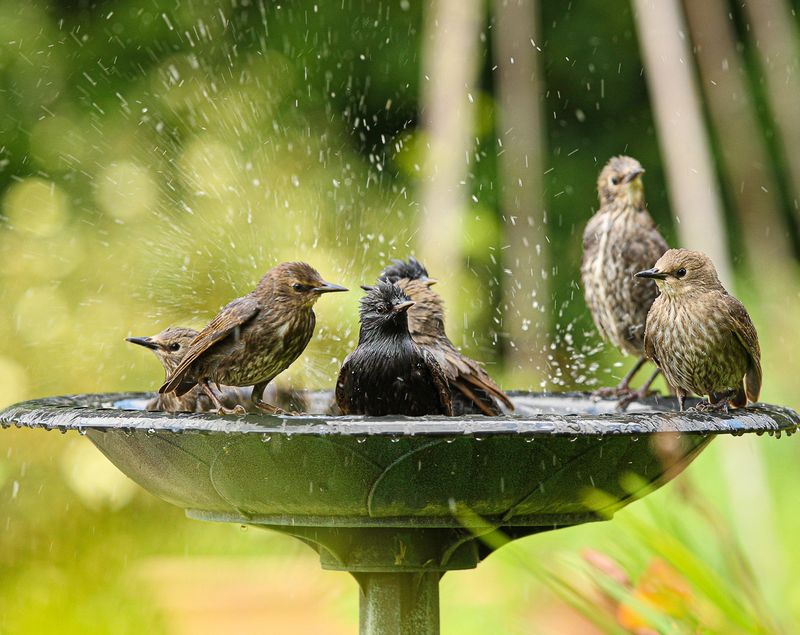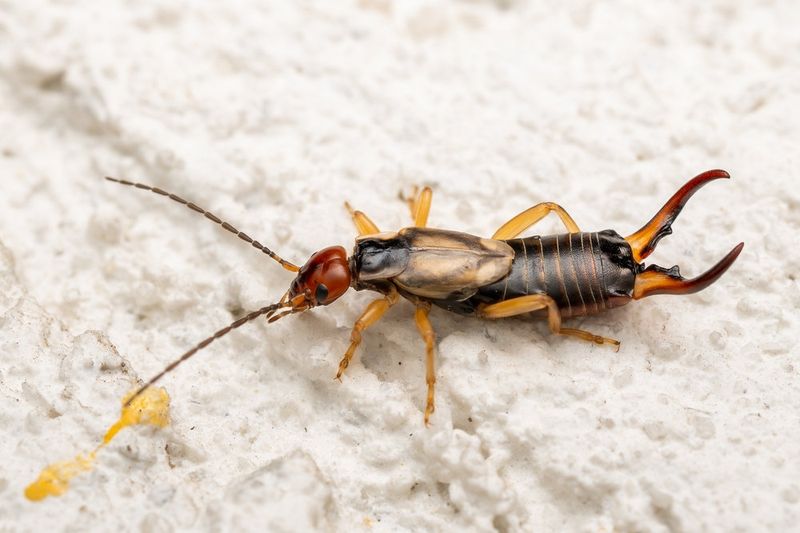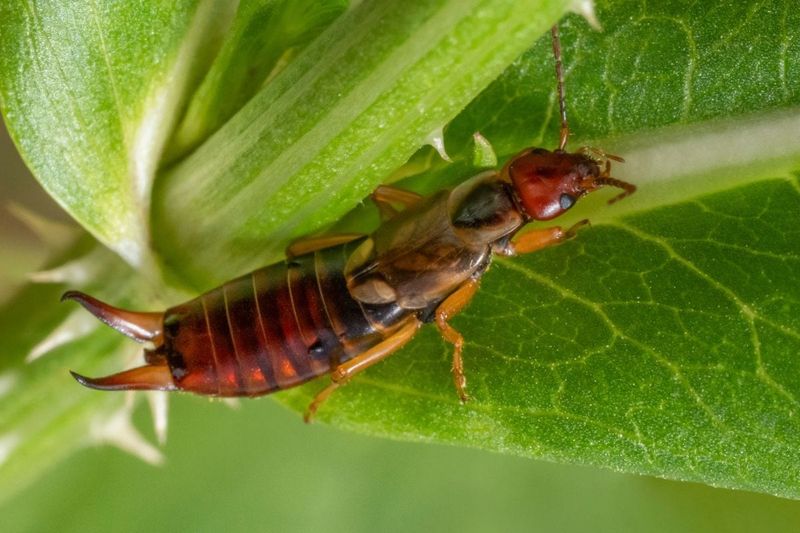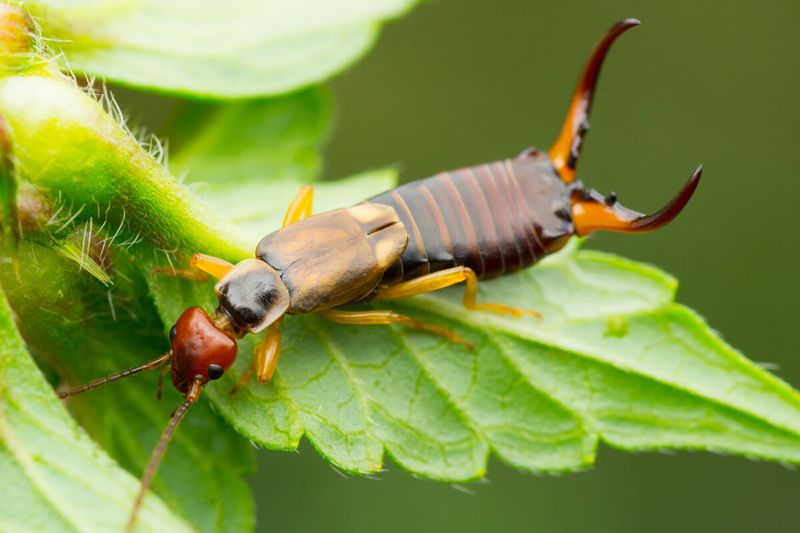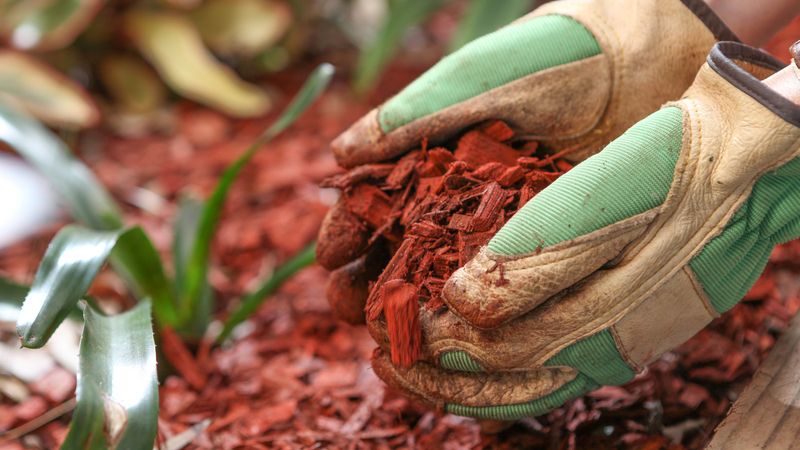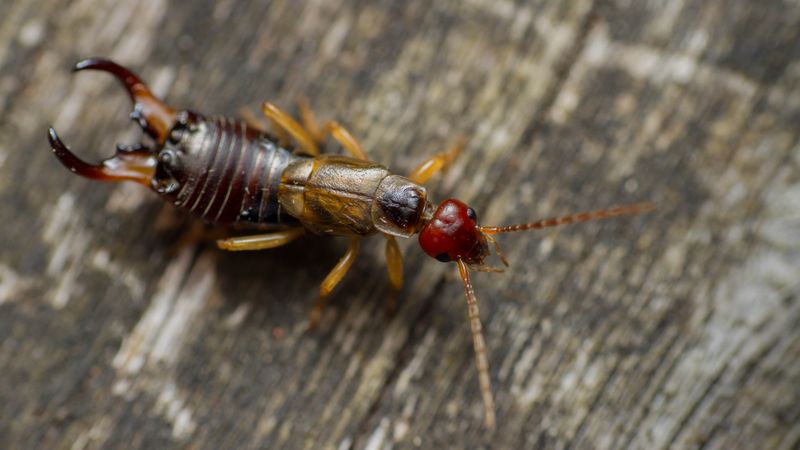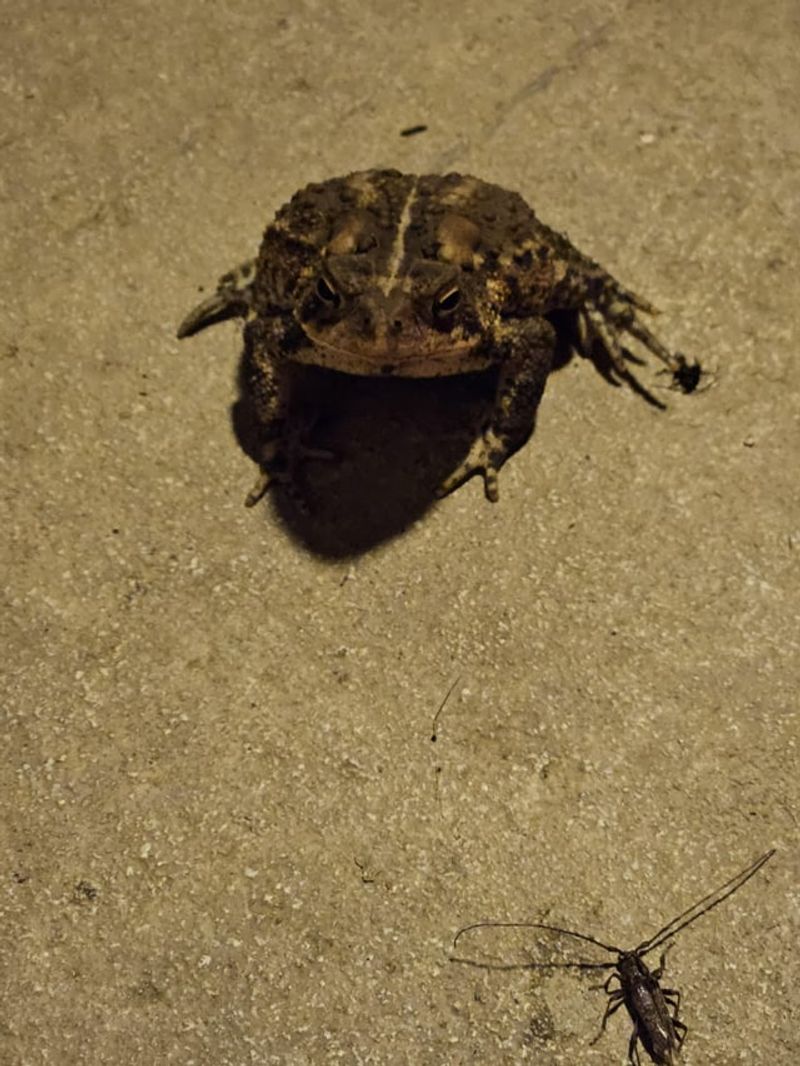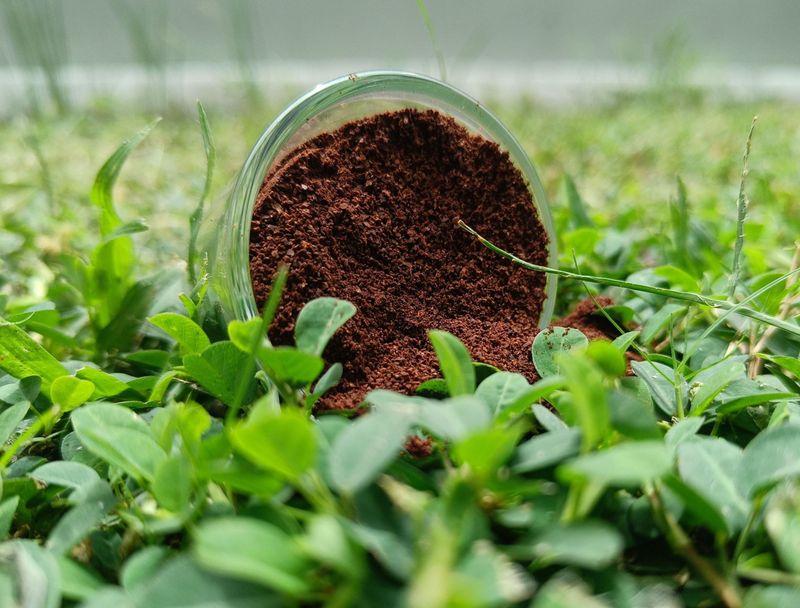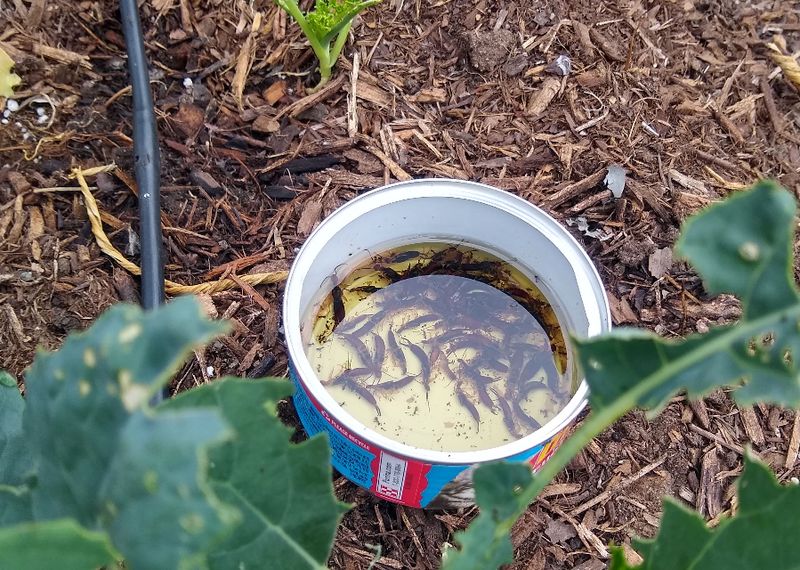If you’ve ever gone out to admire your garden in the morning and found your plants looking like they’ve been nibbled on overnight—there’s a good chance earwigs were the culprits. They’re not all bad—they actually eat some pests—but once they start munching on your seedlings or flower petals, it’s time to draw the line.
Over the seasons, I’ve tried a bunch of natural tricks (some worked better than others), and I’ve pulled together some of the most practical, effective, and eco-friendly methods to keep earwigs in check.
Whether you’re a beginner or have been gardening for years, these tips are easy to put into action and won’t mess with the balance of your garden.
1. Create A Barrier
A simple barrier can work wonders in keeping earwigs at a distance. Consider using materials like cardboard or newspaper to encircle your plants.
These barriers act as a physical shield, preventing earwigs from reaching your precious greens. It’s an easy and cost-effective method that many gardeners swear by.
By maintaining this barrier, you create a line of defense that disrupts the earwigs’ usual path. This technique is especially useful for protecting young seedlings, which are often the most vulnerable to damage.
2. Introduce Birds
Birds are natural predators of earwigs, making them excellent allies in your garden. Encourage these feathered friends by installing birdhouses or placing birdfeeders around your yard.
A diverse bird population can help control pest numbers naturally. Not only do birds help with earwig control, but they also add life and song to your garden.
You may notice a significant drop in earwig activity as birds feast on them. This approach provides a harmonious and eco-friendly solution to your pest problem.
3. Diatomaceous Earth
This is a fantastic natural remedy for dealing with earwigs. This powdery substance is composed of fossilized algae and can be sprinkled around the base of your plants.
Its abrasive texture damages the protective exoskeleton of earwigs, leading to dehydration. As the earwigs crawl over it, they slowly perish, allowing your plants to thrive.
This method is particularly effective when applied after rain or watering when the soil is moist, as it clings better to the surface.
4. Use Traps
Trapping earwigs can significantly reduce their numbers in your garden. A simple trap can be made using rolled-up damp newspaper or a small container filled with soy sauce and oil.
These traps lure the earwigs in, and once inside, they find it difficult to escape. Placing these traps around your garden can effectively capture and reduce the earwig population.
Remember to check and empty the traps regularly to maintain their effectiveness. This approach is both practical and satisfying for observant gardeners.
5. Remove Debris
Earwigs love hiding in garden debris, so keeping your area tidy can deter them from settling in. Regularly clearing out dead leaves, fallen fruit, and old plant material removes the inviting environments earwigs seek.
This simple act of tidying up can significantly reduce their hiding spots. By eliminating debris, you also promote better air circulation and plant health.
A clean garden not only looks appealing but also serves as an unwelcoming place for earwigs, thus keeping your plants safe from nibbling.
6. Plant Companion Herbs
Certain herbs naturally repel earwigs, making them excellent companions in your garden. Basil, mint, and thyme are known to deter these pests with their strong scents.
Planting these herbs near susceptible plants can provide a natural protective barrier. Not only do they help keep earwigs away, but they also add flavor to your culinary creations.
This method offers a dual benefit of pest control and an enriched garden experience. It’s a delightful way to integrate practicality and beauty in your gardening efforts.
7. Keep Soil Dry
Earwigs thrive in moist environments, so managing soil moisture is crucial. By keeping the soil on the drier side, you make your garden less appealing to these pests.
Watering in the morning gives the soil time to dry out during the day, further discouraging earwig habitation. Avoid overwatering and ensure proper drainage to maintain a balanced moisture level.
This practice not only helps with earwig control but also promotes healthy plant growth. Balancing moisture will contribute to a thriving, earwig-free garden.
8. Use Essential Oils
Essential oils like cedar and lavender can repel earwigs effectively. By diluting these oils with water and spraying them around your garden, you create an inhospitable environment for earwigs.
The strong scent is unappealing to them, encouraging them to seek refuge elsewhere. This method is not only natural but also leaves your garden smelling delightful.
Regular application can maintain the deterrent effect, making it a pleasant way to manage pests. It’s a fragrant solution that doubles as aromatherapy for your outdoor space.
9. Mulch Wisely
This is a common gardening practice, but it can unintentionally harbor earwigs if not done carefully. Choose materials like cedar mulch, which naturally repels these pests.
Applying mulch wisely will help retain soil moisture while discouraging earwigs at the same time. It’s important to keep mulch layers thin to prevent creating a damp haven for earwigs.
By selecting the right type of mulch, you balance pest control with soil health. This approach supports a nurturing environment for your plants without inviting unwelcome guests.
10. Encourage Beneficial Insects
Not all insects are foes; some can be your garden’s best friends. Ladybugs and predatory beetles feast on earwigs, helping keep their population in check.
By attracting these beneficial insects, you create a natural ecosystem that balances pest control. Planting flowers like marigolds and dill can invite these helpful bugs. Embracing a diverse insect population not only aids in pest management but also enhances garden biodiversity.
This symbiotic relationship fosters a thriving garden environment that’s both beautiful and balanced.
11. Use Neem Oil
This is an effective organic insecticide that works well against earwigs. By mixing neem oil with water and applying it to your plants, you create a protective barrier that disrupts earwigs’ life cycle.
Its natural properties are non-toxic to humans and beneficial insects when used correctly. This makes it a safe choice for organic gardening.
Regular application ensures that your plants remain safeguarded from earwigs. Neem oil not only controls pests but also contributes to overall plant health, making it a gardener’s ally.
12. Set Up Night Lights
Earwigs are nocturnal creatures, and a simple way to deter them is by using lights. Installing solar-powered garden lights can disrupt their nighttime activities. These lights make it difficult for earwigs to roam freely, as they prefer darkness.
Strategically placing lights around susceptible plants can create an effective deterrent. This method adds ambiance to your garden while keeping pests at bay.
It’s an innovative solution that enhances your garden’s beauty and serves a practical purpose, making it a win-win for night gardening enthusiasts.
13. Introduce Frogs
Frogs are natural predators of earwigs and can be a gardener’s ally. By creating a small pond or water feature, you can attract frogs to your garden.
These amphibians help control pest populations, including earwigs, by making them part of their diet. Introducing frogs can bring a lively and natural balance to your garden ecosystem.
Not only do they aid in pest control, but they also add a musical ambiance with their croaking. This method aligns with nature, promoting harmony and reducing earwig numbers effectively.
14. Use Coffee Grounds
Coffee grounds are a natural deterrent for earwigs. By sprinkling used coffee grounds around your plants, you create a barrier that earwigs find unwelcoming.
The texture and aroma of the grounds are unappealing to them, encouraging them to move elsewhere. This method is an excellent way to recycle kitchen waste while managing pests.
Additionally, coffee grounds enrich the soil with nutrients, benefiting plant growth. It’s a sustainable practice that combines pest control with soil enhancement, making your garden a more beautiful place.
15. Encourage Hedgehogs
Hedgehogs are delightful creatures that can help manage earwig populations. By providing shelter and a welcoming environment, you can attract hedgehogs to your garden.
They enjoy feasting on earwigs, among other pests, making them valuable allies. Installing a hedgehog house and maintaining a naturalistic garden can promote their presence.
Not only do hedgehogs contribute to pest control, but they also add charm and interest to your outdoor space. This eco-friendly approach supports biodiversity while keeping earwigs in check.
16. Try Beer Traps
Beer traps are an unusual but effective method for catching earwigs. By placing shallow dishes filled with beer around your garden, you lure earwigs in with the scent.
Once they enter, they become trapped in the liquid. This simple trap is easy to set up and can significantly reduce earwig numbers. It’s a cost-effective and natural solution that many gardeners find successful.
Regularly checking and refreshing the traps ensures their ongoing effectiveness, offering a practical way to keep your garden earwig-free.



